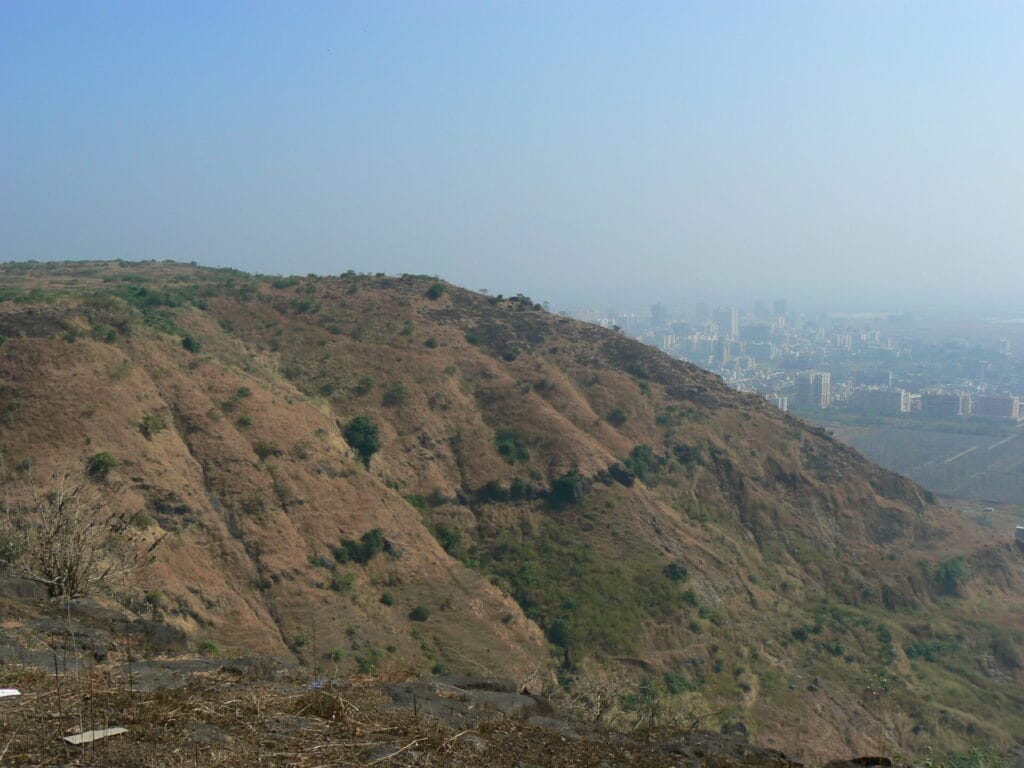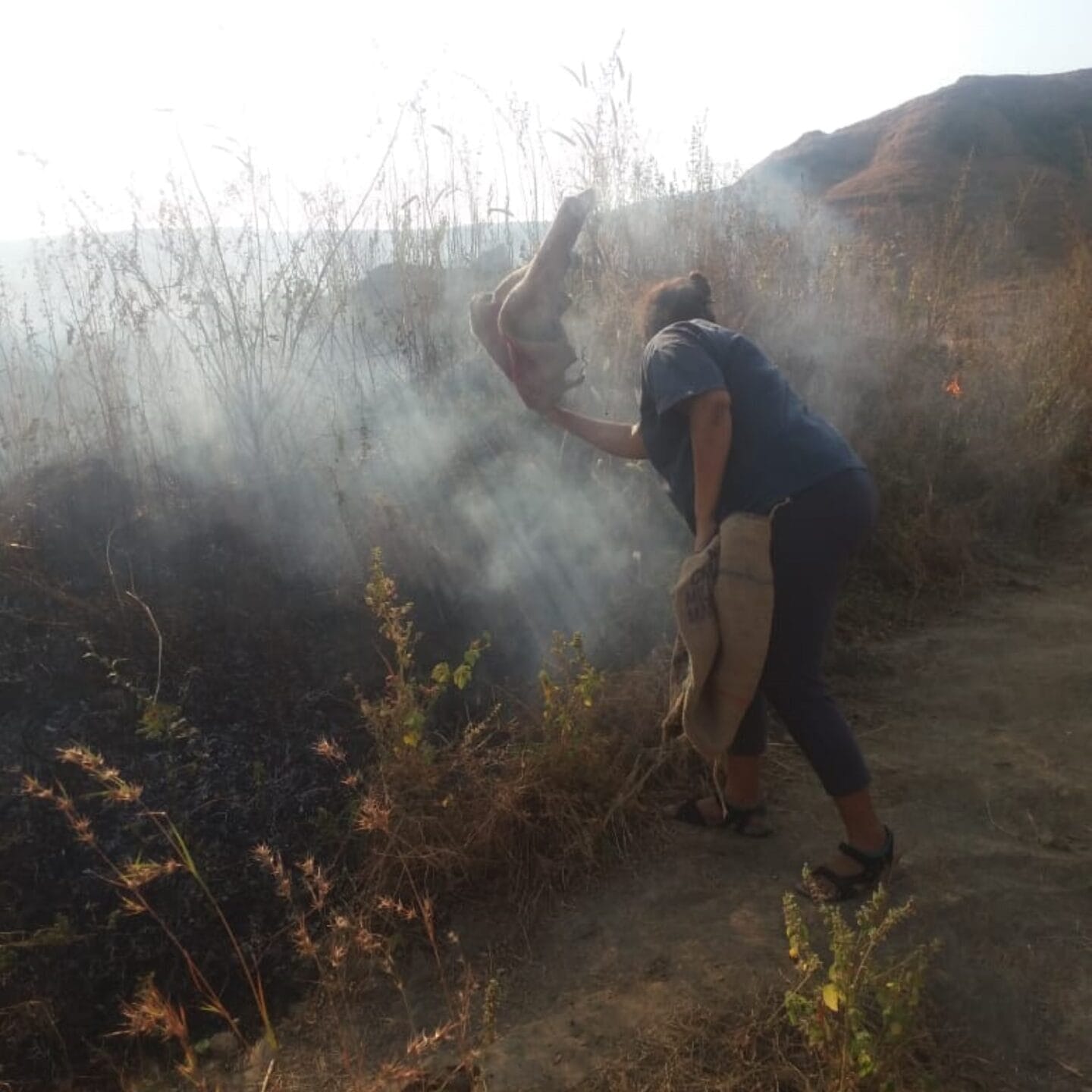Over the years, the Kharghar Hills in Navi Mumbai, have seen many forest fires. According to the Kharghar Fire Station records, between 1st January 2022 and 11th September 2023, totally 164 calls were received relating to fire.
Forest fires usually occur after the monsoon season, once the grass starts drying up. Interestingly, Navi Mumbai and the areas nearby are less likely to be affected by natural forest fires, as the temperature in the area does not increase too much.
Many of these fires are man-made, as are 90% of all forest fires. In Kharghar, the hills are characterised by tall grass that is hard to wade through. People often set the grass on fire to make way for them walk. Many are scared of snakes that might be hiding in the grass and burn the grass for safety.
While forest fires used to occur quite often last year, we at the Kharghar Hills Protection Group have noticed a marked decline. This might be due to increased awareness of the potential causes and consequences of forest fires among locals. Proactive authorities, who are in charge of forested land, have also contributed to reduction in instances of fires.
Need for awareness camps in Kharghar Hills
Forest fires in Kharghar, usually occur a couple of months after the monsoon season in November every year. As the grass dries up, chances of these fires increase – spreading over many acres across the hills.
Read more: Photo essay: threats to Kharghar’s ecosystem
Local volunteers have been working hard to reduce these fires via grass cutting, awareness camps with locals and even those part of the Forest Department. This has helped reduce the chances of fire in a few places like Taloja Hills, Sector 35, Pandava Kada Waterfall area, Fannaswadi Village, and Adai Hills at Panvel.
In the awareness camps we held, we identified the causes of fires, the consequences, and the possible solutions. Some of the key points are mentioned here.
What are forest fires?
Forest fires are wildfires that spread violently, damaging the ecosystem around the forest areas.
Ground Fires are found mostly in decayed roots below ground and in the duff layer, which is composed of dead plants i.e. twigs, dried leaves, bark etc. They spread slowly and produce little to no smoke. Thus, these are undetected for a long time. These fires burn the ground fuels in comparison to other fires.
Surface Fires burn primarily on the ground, spreading across the surface of the forest floor. As a result they burn through surface fuels.

Crown Fires are considered to be the most destructive and dangerous fires. They catch fire on the crown of trees and shrubs spreading from tree to tree. These are quite common in mountains or valleys with dense forests. These can be fatal as the fire can rapidly spread downwards, if the fire starts uphill.
Read more: Cycling to spread a word about mountains and their fragility
Causes of forest fires
There are two ways in which forest fires are caused. Natural forest fires occur due to changing climatic conditions such as changes in the temperature, direction and speed of wind, moisture content in soil and atmosphere. These are beyond our control.
Through our engagement with locals and visitors in Kharghar Hills, we have noticed that the fires in Kharghar are mostly man-made, sometimes started by grazers or local villagers to obtain firewood and safety for grazing cattle from wild animals. Often fires are also caused due to cigarettes or other recreational activities such as drinking.
Fires are also started as a consequence of age-old cultivation practices such as cultivation of ‘Tendu’ leaves used for ‘Bidi’ Production. These leaves are used as a wrapper for beedi. During the summer, fresh leaves are produced by the suckers that emerge from the soil. This process is also enhanced by lighting a fire beneath the Tendu tree.
Consequences
A major consequence of these fires is that the forest grounds lose a majority of their nutrients due to soil erosion. In addition the fires warm the atmosphere considerably due high levels of carbon dioxide. As a result, there is a degradation of the ecology and biodiversity, as well as the livelihoods of the rural poor who work in timber production and agriculture.
Possible solutions
To prevent the rage of fires, an important step we can take is to spread awareness among both urban and rural populations. Implementing a quick service reaction management team who’s always ready with the necessary tools such as fire fighting equipment would also reduce these fires from spreading too far.
In addition, we could also Install a proper hoarding to communicate the hazards of burning the grass, which could be made a punishable offence– especially for recreational use by picnickers and trekkers.

Installing CCTV cameras and fire watch towers in strategic locations could allow for fires to be surveyed and cut off early at different points of the forest.
Finally, within the forest, we can create fire lines which disrupt fire spread, we can remove dry grass and also plant fences.
Read more: What’s that drone over Thane doing during the lockdown? It’s saving forests
Decline in forest fires
This is the second iteration of our workshop; the first was held on a street in 2019. At the time, we spoke to anyone we came across on the street– locals, villagers. We had also called people from CIDCO and Panvel Municipal Corporation.
In December 2023, we added to our existing findings and conducted this second workshop with various state departments – CIDCO, PMC. the forest department, mangrove cells and more.
Over the past few months, forest fires appear to have reduced in the hills, perhaps revealing the links between awareness, sustainable practices and reduced ecological destruction.
We would like to continue these awareness workshops, so that forest fires are avoided in our Kharghar hills.
| Do you stay near Kharghar Hills? Would you like to volunteer or know more about how to help reduce forest fires? You can contact the group Kharghar Wetlands and Hills at khargharwetlands@gmail.com |